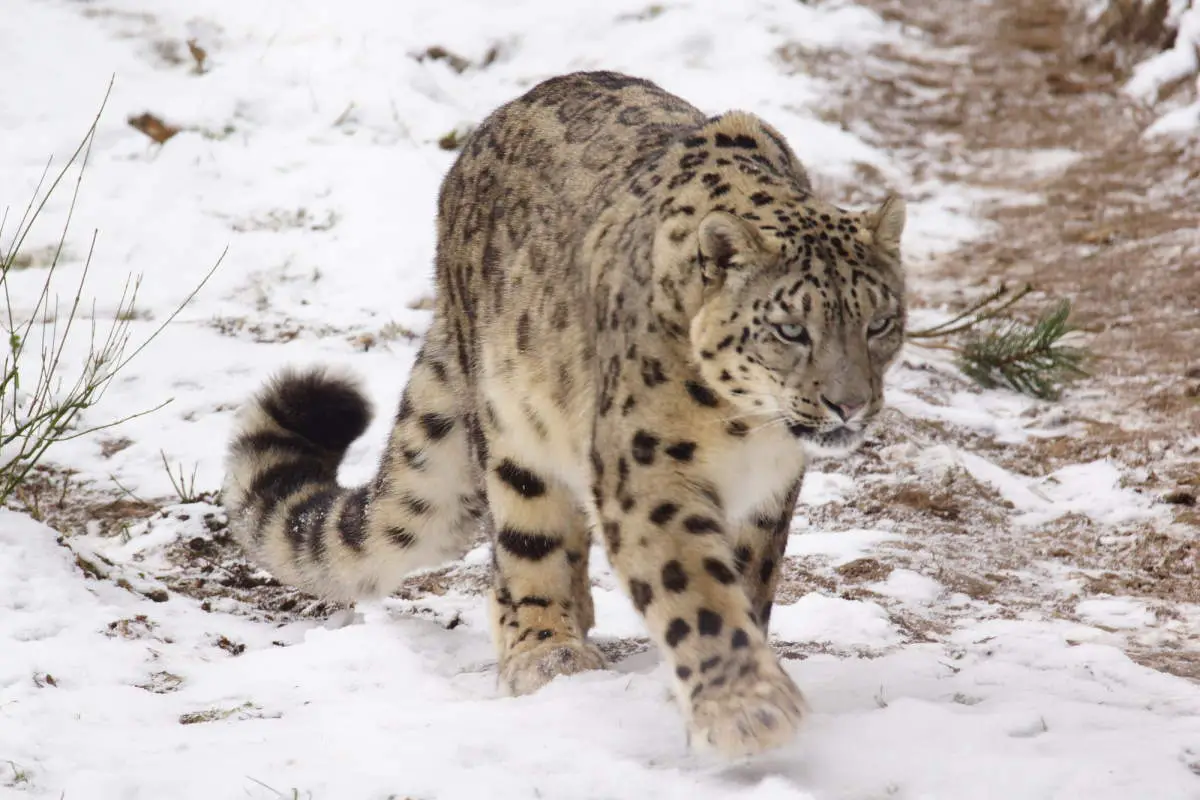The snow leopard (Panthera uncia), also known as the ounce, is a large cat and one of the five species classified in the genus Panthera, others being the lion (Panthera leo), tiger (Panthera tigris), jaguar (Panthera onca), and leopard (Panthera pardus). It is native to the mountain ranges of Central and South Asia. Here are 20 amazing snow leopard facts.
1. They prefer snowy environments
As their name suggests, these big cats prefer snowy environments. Thanks to their thick fur with hairs between 5 and 12 cm (2.0 and 4.7 inches) long, they inhabit alpine and subalpine regions, ranging from eastern Afghanistan, the Himalayas, and the Tibetan Plateau, to southern Siberia, Mongolia, and western China, at elevations from 3,000 to 4,500 meters (9,800 to 14,800 feet). But, they also live at lower elevations in the northern countries of the range.
They can be seen as high as 5,859 meters (19,222 feet) above sea level – the highest altitude ever documented for any big cat species.
The regions snow leopards live in are in fact what can be called cold deserts – and these cold deserts of Asia are also known as the “third pole of the world” because they contain ice fields with the largest reserves of freshwater outside the northern and southern polar regions.
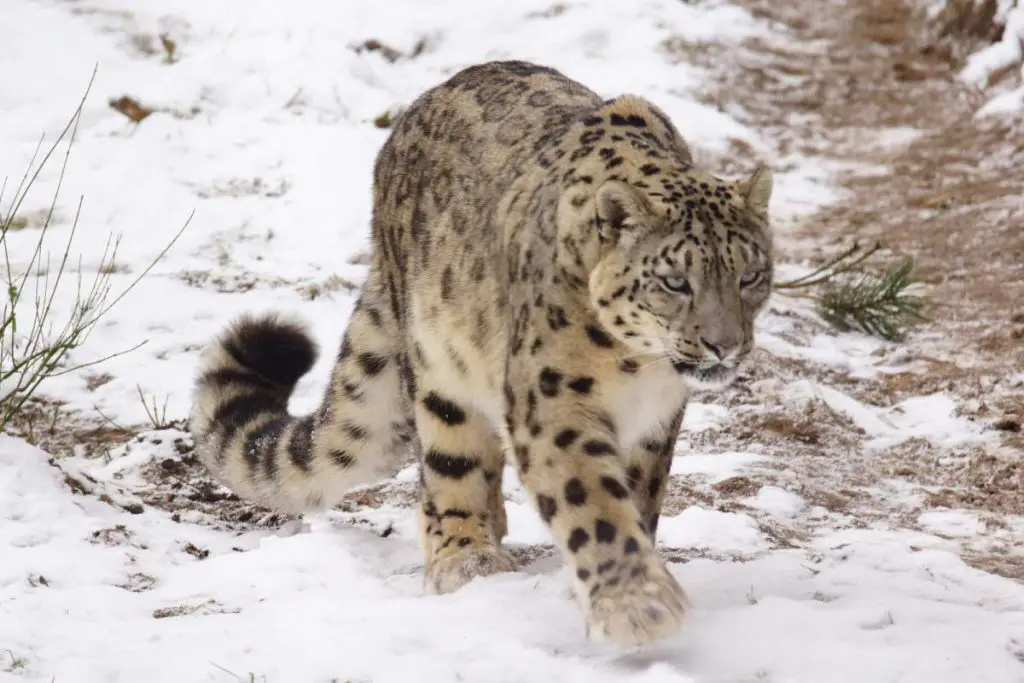
2. Snow Leopard is the smallest member of the genus Panthera
Snow leopards are the smallest cats of the genus Panthera. In other words, they the are smallest of the five “big cats” species (they are smaller than the tiger, lion, jaguar, ad leopard).
Their body length (without tail) ranges from 75 to 150 cm (30 to 59 inches). Their tail is 80 to 105 cm (31 to 41 inches) long. They can reach a shoulder height of 56 cm (22 inches)
They weigh between 22 and 55 kg (49 and 121 lb), with occasional large males reaching 75 kg (165 lb) and small females under 25 kg (55 lb).
3. They are keystone species
Snow leopards are the apex predator of the Himalayas. They are also keystone species.
A concept introduced in 1969 by the American ecologist and zoologist Robert T. Paine (April 13, 1933 – June 13, 2016), a keystone species is a species that has a disproportionately large effect on its natural environment relative to its abundance.
Keystone species have an extremely high impact on a particular ecosystem relative to its population. They’re also critical for the overall structure and functioning of an ecosystem, and influence which other types of plants and animals make up that ecosystem.
So, protecting snow leopards (and, in general, keystone species) and their habitats will result in a cascade of benefits to the rich diversity of plant and animal species living in the same region.
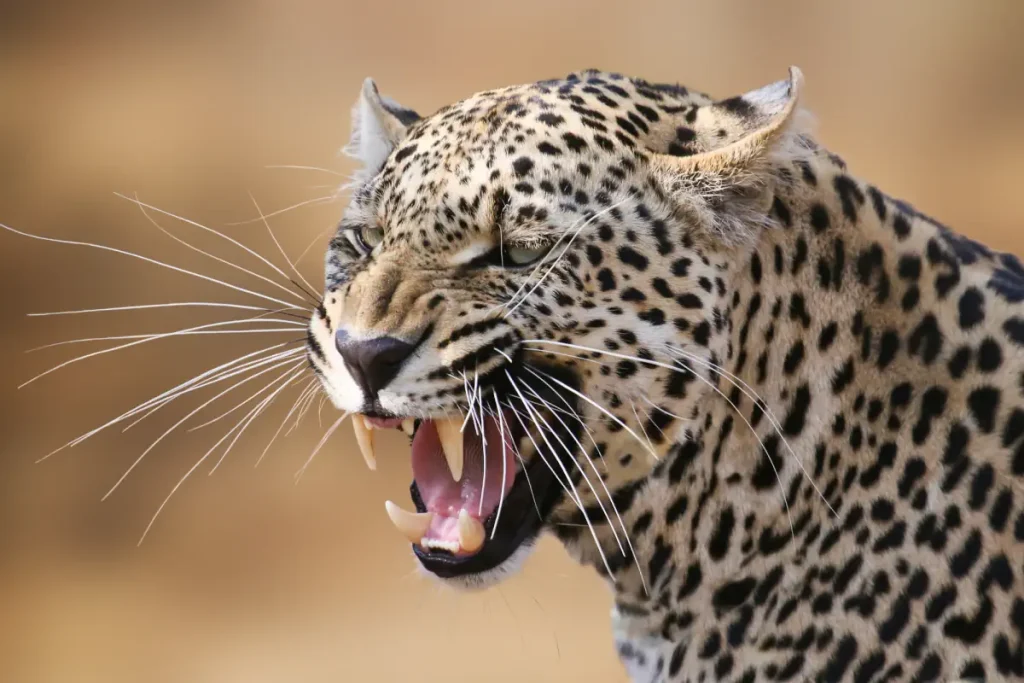
Related: 20 Amazing Leopard Facts
4. Snow leopards can leap six times the length of their body
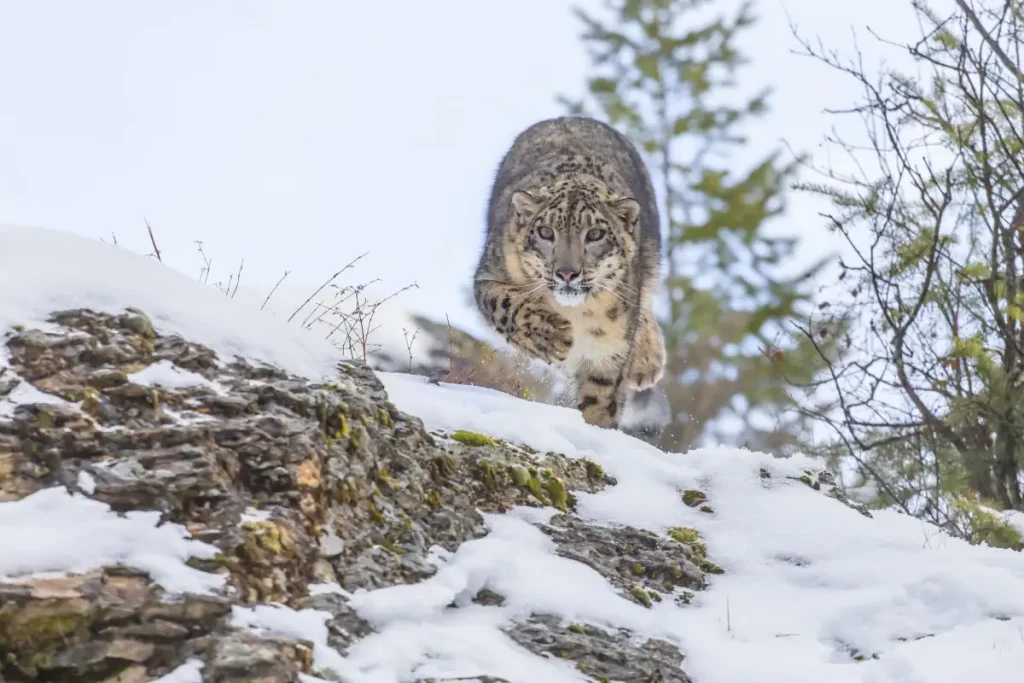
Snow leopard’s hind legs are extremely powerful in that they give the animal the ability to leap up to 9 meters (29.5 feet) – six times the length of its body.
5. They are more related to tigers than leopards
Although their common name suggests that they could be closely related to leopards, they are actually most genetically related to tigers.
6. Snow leopards are nicknamed “ghosts of the mountains”
These big cats are nicknamed “ghosts of the mountains” since they are very seldom seen and spend most of their lives in solitude. But, in the last decades, as their natural prey becomes gradually harder to find, human-snow leopard encounters (and, unfortunately, conflicts) are increasing – see the “not-so-amazing facts” section below).
7. They can’t roar
Snow leopards can’t roar, despite possessing partial ossification of the hyoid bone as in tigers and lions. This partial ossification was previously thought to be essential for allowing the Panthera cats to roar. However, new studies show that the ability to roar is due to other morphological features, especially of the larynx, which is absent in the snow leopard.
Instead, the vocalization of snow leopards includes meowing, grunting, prusten, and moaning, growling, yowling, “prusten” (also called chuffing, a non-threatening vocalization made by blowing air through their nose).
7. They have massive tails
The tail of a snow leopard is almost as long as the animal’s entire body. This massive tail shields the animal from the cold, harsh winds of its habitat and helps it maintain balance while jumping.
They also use their tail as a blanket while sleeping.
The fur on their stomachs is also very thick (up to five inches – 12.7 cm) to help them survive in cold.
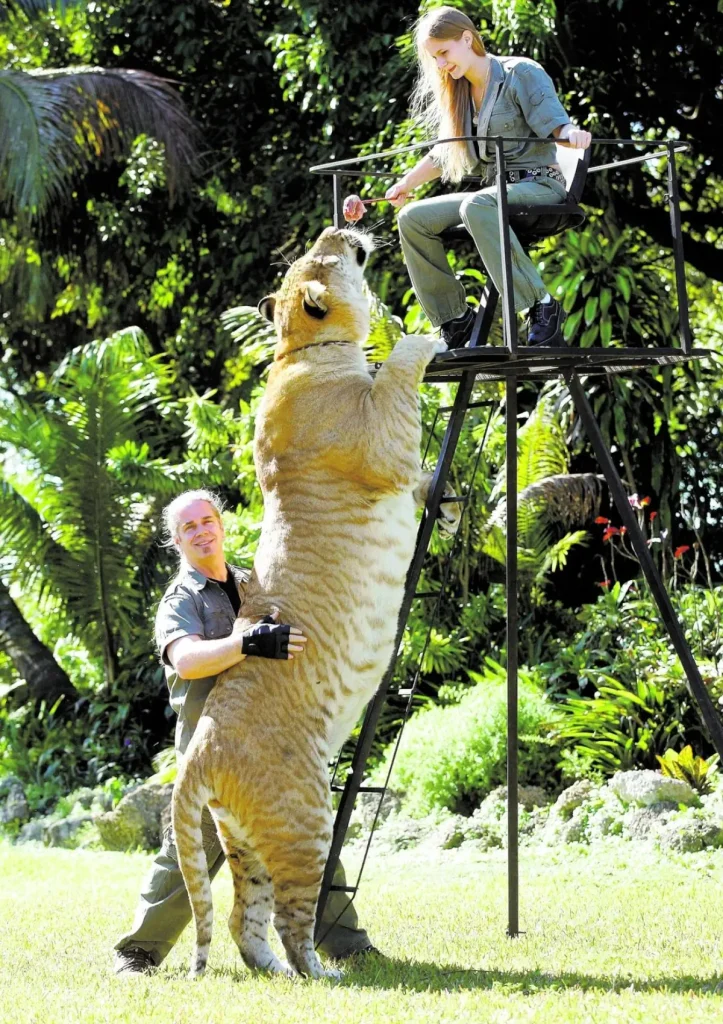
Related: Hybrid Big Cats
8. They can hunt large animals
Snow leopards can prey on animals up to three times their own body weight. But they prefer prey weighing from 36 to 76 kg (79 to 168 lb). They also hunt smaller mammals.
They are capable of killing most animals in their range, with the probable exception of the adult male yak.
9. Their feet (paws) act as natural snowshoes
By distributing their weight over soft snow and protecting them from the cold, snow leopards’ large, fur-covered paws act as natural snowshoes. The pads on their paws are very thick and covered with fur, so they keep the animal both warm and steady on the snow and ice.
Thanks to their “natural snowshoes”, they can travel without difficulty in snow up to 85 cm (33 inches) deep.
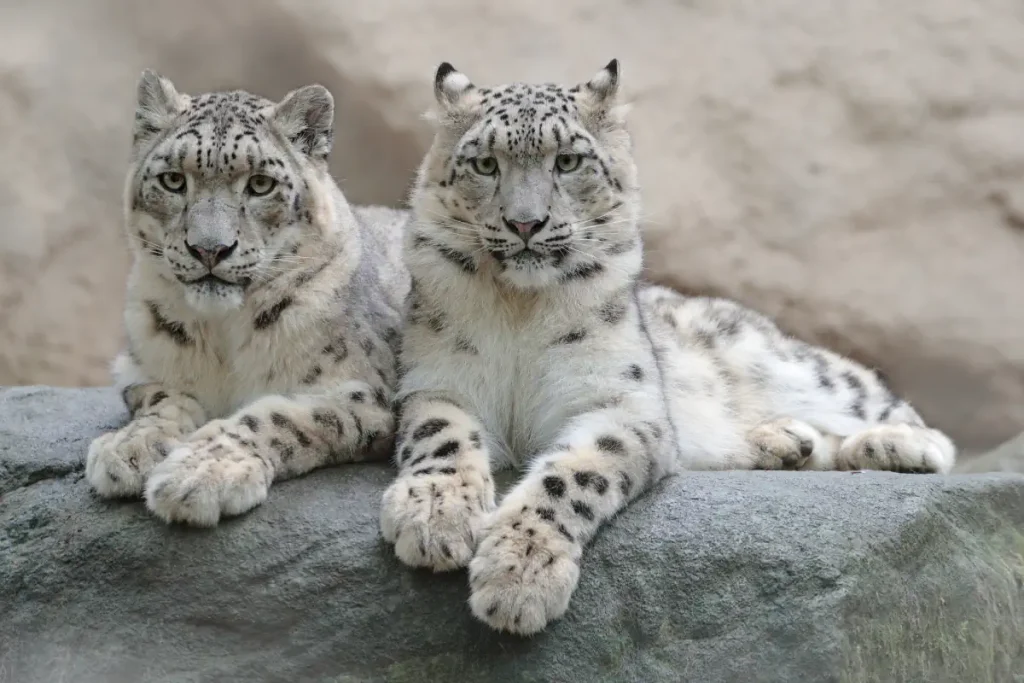
10. They can cover big distances during the night
Snow leopards can travel over 25 miles (40 km) in a single night – a marathon in one night. In a documented case, the animal covered 27 miles (43.5 km) in one night.
But this is not common. They usually cover up to 7 km (4.3 mi) in a single night.
11. Their lifespan in the wild is up to 12 years
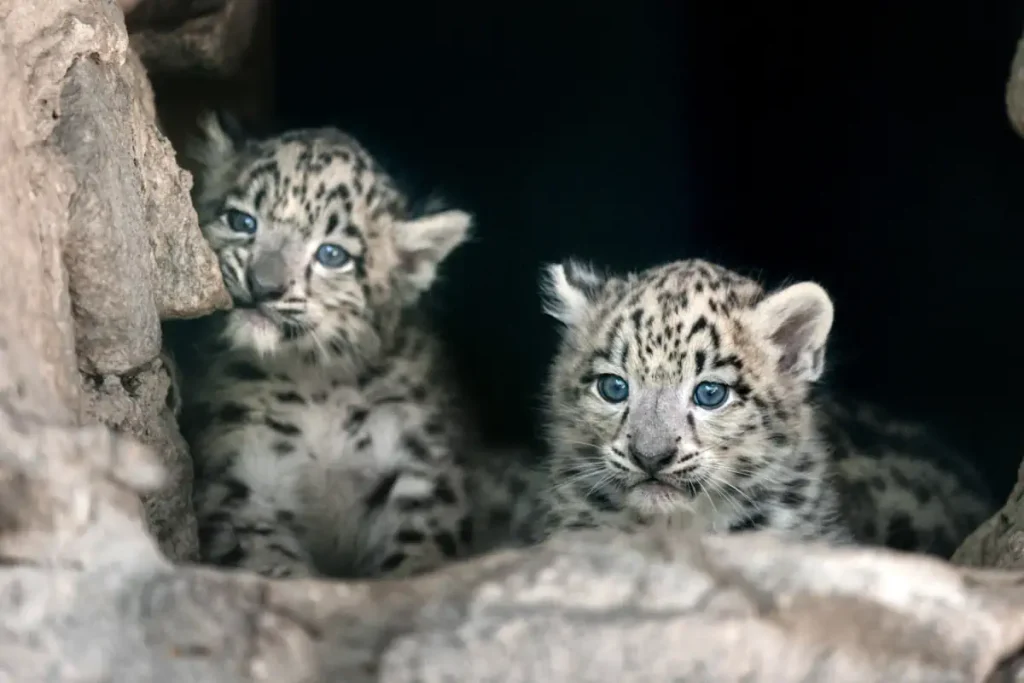
It is estimated that snow leopards may live up to 12 years in the wild. Captive animals may live longer, as long as 22 years.
The breeding season occurs once a year between January and mid-March. During this time period, extreme vocalization and marking activity takes place. Estrus will last anywhere from 2 -12 days in females, and gestation will last from 90-103 days.
This particular season of mating means that cubs are born in late spring or early summer and have plenty of time to grow strong enough over the summer to keep up with their mother during the winter. Typically, litter sizes are 2-3 cubs.
The cubs will stay hidden in a den site for the first 4-6 weeks. Then they will stay for 18-22 months with their mother before setting out on their own. Snow leopards are fully mature to mate by age 2 or 3.
12. They are solitary animals
Like most cat species, snow leopards are primarily solitary outside of the breeding season. Often, after leaving their mother, the siblings will remain together for some time.
13. They consume vegetation too
Like all cats, snow leopards are hypercarnivores (their diet consists of more than 70% meat), but, they also consume a significant amount of vegetation too, including grass and twigs.
14. Their nasal openings are large
They have large nasal openings that allow for increasing the volume of air inhaled with each breath. Considering they live in high elevations where the oxygen level is lower than that of the sea level, that’s an evolutionary adaptation.
These large nasal openings also warm and humidify the cold, dry air.
15. They sleep a lot
The snow leopard is no exception here – like all cats, snow leopards sleep a lot. They can spend up to 18 hours a day resting or sleeping.
16. They are crepuscular animals
Meaning they are more active during dawn and dusk. This is distinguished from diurnal (when the animal is more active during the hours of daylight) and nocturnal (when the animal is more active during the night) behavior.
17. Snow leopards don’t attack humans
These amazing big cats are not known to be aggressive toward humans. To date, only two instances are known. In one of these cases, which occurred in 1940, the animal had rabies.
In the second instance, not far from Almaty, Kazakhstan, a winter passerby was unsuccessfully attacked by an old, toothless, emaciated snow leopard. The animal was caught and taken to a nearby village.
No other reports of any snow leopard attacking a human being are known.
18. Their home range is big
Some individuals have home ranges of up to 1,000 km2 (386 square miles).
19. They are really tough that they can even survive 120-meter (400 feet) falls
Hunting is always a challenging task even in an environment where prey is abundant and readily available.
It is downright overwhelming in the cold, rocky, steep, and dry high-altitude landscapes that the snow leopard roams. In these mountains, wild sheep and goats are few and far between, and each hunt is a rollercoaster ride of steep cliffs, precipitous falls, and desperate lunges. Each failed hunt costs precious energy the cat can ill afford to waste.
So they have evolved in a way that their body became really strong and as a result, can take a lot of beating. They can even survive falling from a cliff.
20. They eat slowly
Consuming a prey animal usually takes 3-4 days. The cat stays near the kill site throughout that time to protect the meal from scavengers such as vultures and ravens, feeding every few hours until the carcass is bare.
On average, snow leopards hunt a large animal every 8-10 days.
Some not-so-amazing snow leopard facts
The snow leopard is listed as Vulnerable on the IUCN Red List because the global population is estimated to number less than 10,000 mature individuals and is expected to decline further by about 10% by 2040.
The major threat to their populations is poaching and the illegal trade of skins and body parts. Habitat loss and retaliatory killings are the other main reasons this big cat is under threat.
Snow leopards are forced to hunt livestock for survival as their natural prey becomes gradually harder to find. As a result, they are often killed by local farmers because they prey on livestock such as sheep, goats, horses, and yak calves.
Since human settlement and increased use of grazing land, the range of snow leopard habitats continues to decline. This progress is gradually fragmenting the species’ historical range. This is very bad because this habitat fragmentation will eventually lead to a genetic bottleneck. The consequences of such a “genetic bottleneck” might include a low sperm count, decreased sperm motility, deformed flagella, difficulty in captive breeding, and susceptibility to disease.
Global warming is also one of the environmental threats for this big cat.
Sources
- Snow Leopard Facts on the World Wildlife Fund website
- Snow Leopard on Wikipedia
- Keystone species on Wikipedia
- Keystone species on the Biology Dictionary
- “Protecting Snow Leopards in Central Asia” on the Leonardo DiCaprio Foundation website. In partnership with The Christensen Fund, LDF is helping to support and expand a 10-year project in Central Asia dedicated to working with a wide array of local community organizations to protect snow leopards from extinction.
- “Snow Leopard: Ghost of the Mountains” on the Untamed Science website
- “Snow leopard facts for kids” on Kiddle
- “Key Snow Leopard Facts” on snowleopard.org
- Where do snow leopards like to hang out? on snowleopard.org
- How Many Elephants are Left in the World in 2025? - August 17, 2025
- Moon Landings: All-Time List [1966-2025] - February 2, 2025
- What Is Max-Q and Why Is It Important During Rocket Launches? - January 16, 2025
